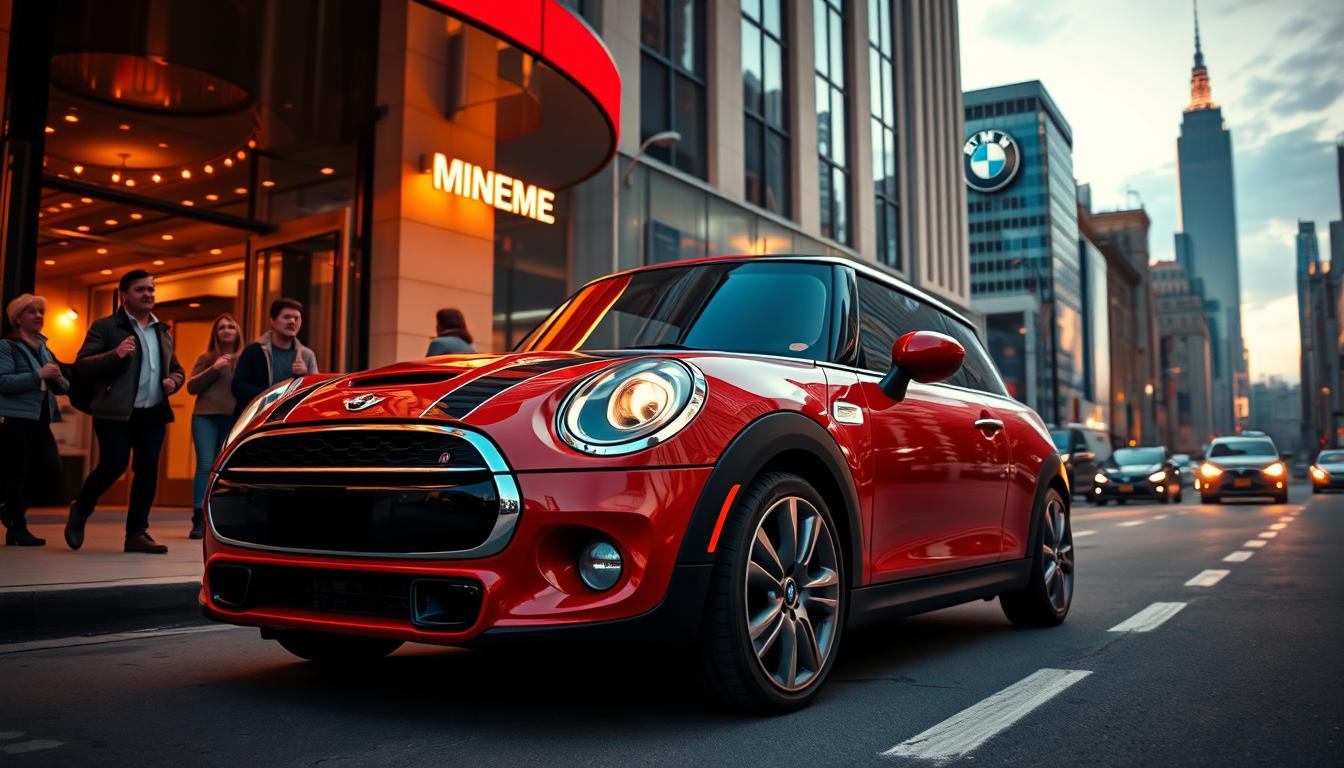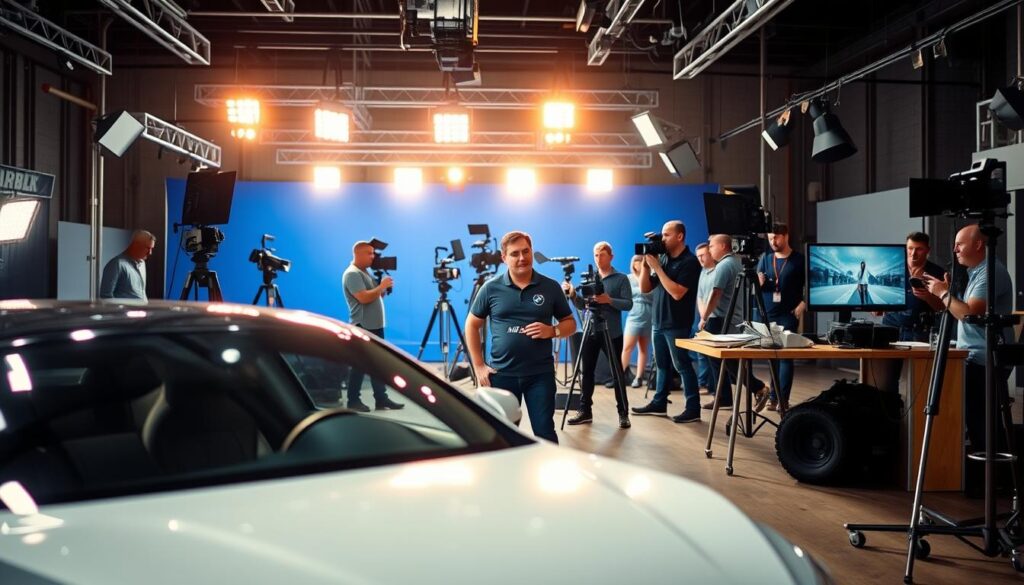
In 2001, BMW made a bold move that would change automotive advertising forever. By releasing The Hire series, a collection of short films featuring Clive Owen as the enigmatic Driver, BMW saw a 12% increase in sales within a year. This innovative approach not only captivated audiences but also set a new standard for branded content.
Traditional car ads often focused on specs and features, but BMW took a different route. They crafted cinematic stories that prioritized narrative over nuts and bolts. Directed by legendary filmmakers like John Frankenheimer, these films were more like mini-movies than ads. The result? Over 100 million views and a significant boost in brand engagement.
This strategy wasn’t just about entertainment; it was a smart business move. By integrating high-quality storytelling with brand messaging, BMW created a connection with their audience that traditional ads couldn’t. The success of The Hire series, as discussed in this detailed analysis, shows how innovative marketing can drive real results.
Introduction: The Power of Cinematic Storytelling in Automotive Marketing
The automotive industry witnessed a seismic shift in marketing strategies with the rise of cinematic storytelling. Traditional ads focused on specs, but cinematic approaches like BMW’s The Hire series redefined engagement, blending compelling narratives with brand messaging.
Understanding the Shift from Traditional to Digital Marketing
Automotive marketing evolved from static ads to dynamic, narrative-driven digital content. This shift was fueled by the need for immersive experiences. Early platforms like Myspace struggled with poor user experiences, while Facebook thrived by prioritizing simplicity and intuitive design.
Marketing Insights Tailored for the Canadian Audience
Canada’s digital landscape presented unique opportunities. BMW’s strategy included high-quality production and director collaborations, ensuring content resonated deeply. This approach not only engaged audiences but also set new standards for automotive marketing.
“Cinema is the ultimate perceiver of human emotion. It’s the perfect medium to tell stories that resonate deeply with audiences.”
| Aspect | Traditional Marketing | Digital Marketing |
|---|---|---|
| Focus | Specifications and features | Storytelling and emotional connection |
| Medium | Print, TV | Online video, social media |
| Engagement | Passive viewing | Active participation |
For more insights on digital marketing strategies, visit our guide: E-commerce SEO Strategies.
Evolution of a Revolutionary Campaign
From its experimental beginnings to its current status as a benchmark in branded content, the digital film series has undergone a remarkable transformation. This evolution marks a significant shift in how automotive marketing engages audiences, blending cinematic quality with online advertising.
From Early Online Ventures to Award-Winning Films
The series began with films like Ambush directed by John Frankenheimer, setting the stage for high-quality storytelling in advertising. These early ventures not only captured viewers’ attention but also laid the groundwork for future innovations. The collaboration with renowned directors brought a level of production excellence that was unprecedented in automotive marketing.
The Role of Innovation in Capturing Viewer Interest
Innovative storytelling methods were key to engaging a global audience. By focusing on narrative over technical specs, the campaign created a emotional connection with viewers. This approach not only boosted engagement but also influenced consumer behavior, leading to increased sales and brand loyalty.

The success of the series can be attributed to the creative risk-taking and visionary direction of its filmmakers. For more insights on how to integrate innovative strategies into your marketing, visit our guide on production excellence.
BMW Mini-Movies: A Cinematic Revolution in Automotive Advertising
BMW’s mini-movies redefined automotive advertising by blending high-quality film production with branded content. This approach captivated audiences with compelling narratives, setting a new standard in the industry.
The series collaborated with renowned directors like Tony Scott and Guy Ritchie, whose cinematic styles enhanced viewer engagement. Strategic release timing and creative risks merged art with commercial messaging, making the films stand out.
Unlike clunky early social platforms, BMW’s refined, story-driven approach focused on emotional and intellectual engagement. Iconic scenes and narrative techniques from films like Ambush and Beat the Devil left a lasting industry influence.
These films revolutionized automotive media, showcasing products like the BMW M70 through silent car chases and innovative storytelling. They set a benchmark for future automotive advertising, proving cinematic storytelling’s power in engaging audiences.

Behind the Scenes: Creative Talent and Production Insights
The success of BMW’s cinematic series can be attributed to the collaboration of top-tier directors and meticulous production planning. Renowned filmmakers like Guy Ritchie and Tony Scott brought their unique styles to the project, elevating the storytelling and visual appeal.

The production process was as intricate as the films themselves. Each short film featured a different BMW model, with budgets reaching millions. This investment in high-quality production ensured that the final product was not just an advertisement, but a cinematic experience.
Star Directors and Production Excellence
Directors like Neill Blomkamp and Joe Carnahan were instrumental in shaping the narrative. Their expertise in blending action with emotion created a compelling viewing experience. The films were shot in various locations worldwide, adding to their global appeal.
Production Breakdown and Pre-Release Strategy
The pre-release strategy was equally important. Teasers and trailers were released strategically to build anticipation. Premiering at film festivals added credibility and buzz, making the films a talking point among critics and audiences alike.
For more insights into how production excellence can elevate your marketing, visit our credentials page to explore successful strategies.
Interactive Engagement and Viewer Participation
Engaging audiences in the digital age requires more than just passive viewing. Interactive content has become a cornerstone of successful marketing strategies, allowing brands to build deeper connections with their audiences. By encouraging active participation, companies can foster loyalty and drive engagement to new heights.
Implementing a Timeline Challenge for Your Audience
A timeline challenge is an innovative way to engage your audience. This concept involves asking viewers to identify key pivotal moments that could have changed digital marketing history. For instance, considering where platforms like Myspace might have succeeded had they adopted simpler, more user-friendly strategies similar to Facebook’s approach. This challenge not only educates but also involves the audience, making them active participants rather than passive observers.
Leveraging Social Media to Enhance User Experience
Social media plays a crucial role in disseminating innovative content and nurturing community participation. Platforms like Facebook and Instagram allow brands to share interactive content, such as puzzles and challenges, that resonate with a tech-savvy audience. For example, BMW’s mini-movies incorporated social media sharing and interactive puzzles, as reported in their case studies, which significantly boosted engagement and viral sharing.
| Aspect | Traditional Marketing | Digital Marketing |
|---|---|---|
| Engagement | Passive | Active |
| Medium | Print, TV | Social Media, Online Video |
| Interaction | One-way | Two-way |
By integrating interactive elements into your marketing strategy, you can create a more immersive experience for your audience, driving both engagement and brand loyalty. Encourage your readers to participate in these challenges and share their experiences, fostering a sense of community and enhancing your brand’s visibility in the digital landscape.

Conclusion
The rise of cinematic storytelling in automotive marketing, as seen through BMW’s groundbreaking film series, has left an indelible mark on the industry. By blending high-quality production with compelling narratives, these films transformed how car manufacturers engage with their audiences. The series, featuring renowned directors like John Woo and Ang Lee, not only garnered over 100 million views but also led to a significant 12% increase in sales.
The evolution from experimental digital ventures to award-winning films highlights the power of innovation. Collaborations with directors such as Sam Hargrave and Joseph Kosinski brought unique styles that captivated global audiences. This approach contrasted sharply with traditional digital missteps, like Myspace’s clutter, emphasizing the importance of strategic simplicity as seen in platforms like Facebook.
Reflecting on this case study, consider how your brand can embrace innovative strategies. Engage in the timeline challenge to explore pivotal moments in digital marketing history. By blending artistic storytelling with data-driven insights, you can create content that resonates deeply, driving both engagement and sales.

 BMW Mini Movies Driving Sales Through Cinematic Storytelling
BMW Mini Movies Driving Sales Through Cinematic Storytelling
0 Comment